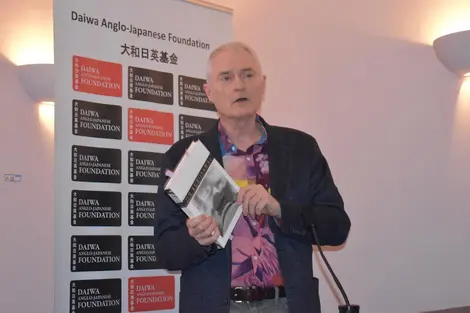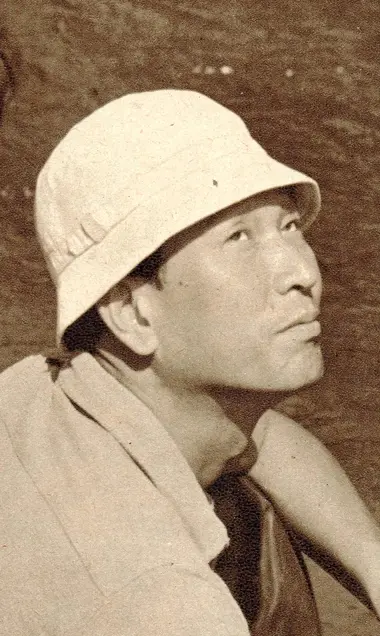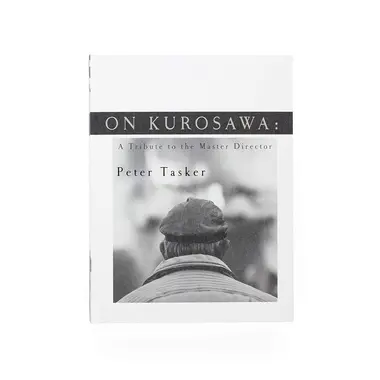Akira Kurosawa 黒澤 明
- Published on : 08/03/2019
- by : Régis Arnaud
- Youtube
A Japanese cinematic giant
Akira Kurosawa is a master of Japanese cinema who is celebrated globally. Here's a look back at his works and his life with an enthusiast, Peter Tasker in an interview with Arnaud Régis.
The best
"What do you think are the 100 greatest films in the history of cinema shot in a non-English language?" : this is the question posed by the BBC to 209 critics from 43 countries in a poll whose results were published last October. Among the titles selected, French (27 films), Chinese-speaking (12), Italian (11), and Japanese (11) films stood out. But one name shone among all: Akira Kurosawa, author of 4 of the 100 titles elected, including 2 among the first 10, and world number one: The 7 samurai.
And the BBC specifies: "The 7 samurais are loved by critics around the world - loved everywhere except in Japan. None of the six Japanese critics retained a Kurosawa film in their choices". 16 of the 21 Chinese critics in the survey selected an Akira Kurosawa film among their 100 favorite titles.
It's an old story. The importance of Akira Kurosawa was revealed to the Japanese by his Golden Lion, obtained at the Venice Film Festival in 1951. He is the main influence on the greatest cinematographic success of all time: Star Wars (notably the film The Castle of the Spider ). Steven Spielberg and Georges Lucas gave him an honorary Oscar in 1990 in front of all of Hollywood in a trance. Poll after poll, The 7 Samurai is the unbeatable classic of spectators around the world, the eastern counterpart of Gone with the Wind.
But in Japan, Akira Kurosawa remains this discreet, somewhat cumbersome icon, whose titles everyone knows but no one looks at anymore. Shinobu Hashimoto, one of the greatest screenwriters who ever lived, author of some of the screenplays of his greatest hits ( The 7 Samurai, Rashomon, The Spider's Castle ...) died last July in 100 years. In total indifference in Japan.
A free book
It is therefore up to a foreign amateur to once again do justice to the greatest Japanese filmmaker. In On Kurosawa: a Tribute to the master director (ed. Shashasha), Peter Tasker, a financial expert, a novelist in his spare time and established in Japan for a long time, takes up the great films of the master who, by his admission, "has changed his life" and encouraged him to come and live in Japan.
His book is the reverse of critical exegesis. Endowed with a magnificent iconography, he varies the perspectives, the angles, and the points of view, devoting to certain films a short poem, imagining for others the life of a character after the film, recounting for still others the shooting circumstances...
Peter Tasker also returns to the personal life of Akira Kurosawa and in particular to his dramatic episodes. In particular on the suicide of his brother, a reciter of silent films ( benshi ), who will not survive speaking. In the mid-1970s, amid a creative breakdown after the failures of Barbarossa and Dodesukaden, Akira Kurosawa in turn attempted to commit suicide by cutting the veins in his hands and neck.
Peter Tasker paints the portrait of a perfectionist, sometimes at the limit of madness, very hard with his actors, but who kept a cohort of faithful technicians throughout his career. We know that he reconstructed entire castles for some of his epic dramas (Ran for example).
"For the shooting of one of his last films, he not only built a house but planted flowers and plants in the spring so that they would be in bloom in August at the time of the shooting. He placed in the closed drawers furniture that he filmed objects, invisible to the camera, but which, according to him, gave more authenticity" laughs Peter Tasker, visited in his office in Aoyama (Tokyo).
The Universal Filmmaker
In Solidarity with his colleagues Masaaki Kobayashi, Kon Ichikawa, and Keisuke Kinoshita (the critics have dubbed their little group The Four Knights ), Akira Kurosawa has had little contact with the Japanese New Wave, the porn novel of the 70s, and the sub-genres that arose from classical cinema in Japan. He differed from this generation by his immense literary culture in which Balzac, Shakespeare, Dostoyevsky, and the classic of Japanese literature The Said of Heike rubbed shoulders. On the other hand, he was sensitive to the cinema of his cadets Kenji Miyazaki and Takeshi Kitano (he places Hanabi among his hundred favorite films).
Where to situate it politically? His work begins by recounting the destinies of ordinary beings put under pressure and forced to act and ends with historical frescoes of incredible ambition. "What is certain is that at Kurosawa, it never ends well. Even when a hero does good, there is always a politician to pull the chestnuts out of the fire", believes Peter Tasker.
How to explain the universal appeal of Akira Kurosawa's work? How to explain, on the contrary, that Japan has almost forgotten it? It's because Japan has changed faster than the rest of the world, explains Peter Tasker.
"There is something elementary in Kurosawa's cinema. His samurai films are set in times of war. But today Japan lives in a time of peace. Its inhabitants do not risk their lives or their careers every They are more sensitive to the cinema of Ozu or Mizoguchi. But in China, in Africa, in Turkey, everyone is in danger of life or death, everyone risks their life, their reputation, their career; These people understand the stakes of Kurosawa's characters."
On Kurosawa: A Tribute to the Master Director, by Peter Tasker. Ed.Shashasha. Can be purchased here and here.
















